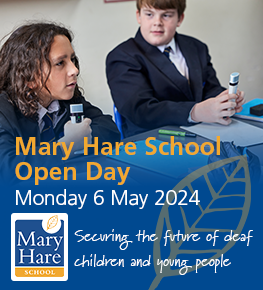3.8. Cochlear implant assessment
Introduction:
In line with the NICE TA566 guidance, if the child has severe to profound deafness described as ‘hearing only sounds that are louder than 80 dBHL at two or more frequencies bilaterally without acoustic hearing aids’, they can be referred for a cochlear implant assessment.
The referral can be made by the audiology team, ear, nose and throat (ENT) specialists, or general practitioners (GPs). There are specific centres around the UK; details of these can be found in the patient’s section of the British Cochlear Implant Group (BCIG) website.
More information regarding the actual cochlear implant and sound processor and the different manufacturers can be found in Section 6.
The cochlear implant (CI) team involves a range of professionals: ENT surgeons; audiologists; QToDs; SaLTs; AVP consultants and psychologists. The child and family will meet with each of the professionals.
Procedure:
Although a range of assessments has been carried out through the audiology department, many of these will be repeated by the cochlea implant (CI) team as they will need a detailed, current, and as accurate as possible overview of the child’s hearing thresholds. This will include recording the use of hearing aids (data logging). These assessments may take several visits to complete.
The CI team also will complete a preliminary questionnaire to collect as much information as possible about the child. At this stage, parental permission will be requested to contact other professionals involved with the child.
Once this information is collected, more assessments and information are gathered. Further audiology assessments will be carried out. The implant centre QToD will visit the home/nursery/school to carry out functional listening assessments and the SaLT will carry out expressive and receptive language assessments.
In addition, the child will have a computerised tomography (CT) scan and an MRI scan to establish that it is physically possible to perform the surgery; cochlear dysplasia (structural problems with the cochlea) may result in a cochlear implant not being a suitable option. A further ABR may be required, however, if this referral is via NHSP so that ABR may be accepted. It is probable the child will be anaesthetised for these scans as they need to be completely still.
Finally, once all the assessments, information, and data have been collected, a meeting is held with the child’s family and the professionals involved to decide whether to go ahead with cochlear implantation.
Considerations for QToDs
- The CI assessments could involve many visits to the implant centre. Support the families and reassure them about the reasoning and purpose for these.
- Families will have questions after the multi-disciplinary team (MDT) meeting; having a good knowledge of all types and manufacturers of cochlear implants and speech processors will be beneficial.
- Support families in understanding the importance of wearing hearing aids, especially during the assessment period.
- Surgery can be fearful for any family. Reassure families regarding each stage of the process so that they understand what will happen.
Cochlear implant operation:
Prior to the operation, the family and child will meet with the audiologist who will discuss the option of sound processors. Although there is a range of manufacturers, hospitals tend to have a specific type they use more frequently.
The operation process, the effects of a general anaesthetic, and pain relief are discussed with a doctor at a pre-surgery appointment. In most cases, the family are informed of the expected time the operation will take place and the length of time that the child must not eat or drink.
The surgery
The adult with ‘parental responsibility’ will bring the child to the hospital. If an adult without parental responsibility brings the child in, the operation will be cancelled. It is also important to bring in any medicine the child is currently taking.
The anaesthetist will meet with the family before administering the general anaesthetic. The surgery will take around four to five hours for a bilateral implant. From the MRI scans, the position of insertions is marked on the head, to make the positioning of the coil as symmetrical as possible. A small amount of hair behind the ear is shaved, and a small cut of approximately 5 cm is made.
There are two stages to the surgery. Firstly, the surgeon will drill through the mastoid bone, initially a space is made for the implant to sit, and then drills a small channel into the middle ear and the cochlea. This is very delicate as it passes by the nerves that affect facial movement and taste. Regular checks take place during the surgery to ensure that these nerves are not affected.
Next, when the drilling is complete, the implant is positioned in the space behind the ear, and the electrode is threaded carefully through the channel to the cochlea. Care is taken to preserve any remaining hearing, but it is not always guaranteed.
Once in position, the audiologist will test and check the electrodes to ensure they work. This will also create the initial programme of the switch on.
Finally, the surgeon will close the incision. Antibiotics are given at the time of surgery to reduce the risk of infection, and the child is taken to the recovery ward where they generally will spend one night.
The next day, an x-ray will be taken to record the position of the implants. The incision will be checked, and the child will then be allowed to go home with additional antibiotics. It is important the incision area is kept clean and dry, and protected from infection. The child will need to stay home for two weeks.
Post-operation and rehabilitation:
This will be the start of a busy few months with regular appointments with the audiologist, SaLT, and QToD.
Two to three weeks after the surgery will be the ‘switch on’ appointment. The ENT doctor will arrange an appointment to check the scar is healing well. This could be a separate appointment or jointly with the audiologist. The audiologist will connect the sound processors to the computer to activate the implant, programming the volume levels, and mapping the electrodes.
To prevent the child from becoming overwhelmed by the sound, the programming of the processor (known as the mapping process) starts at low levels, gradually increasing over a period of appointments as the child becomes more accustomed to the sound. At each initial appointment, there are progressive programmes (called MAPs) given for the child/parent to increase every week.
Once the switch on has successfully taken place, the child needs to learn to listen and understand the sounds they can now hear. There will be a range of professionals who will support the child and family in this rehabilitation stage including implant centre QToD, SaLTs, implant centre audiologists, and the local QToD and SaLT.
Considerations for QToDs
- The surgery can be scary for the family. Reassure them that surgeons are very experienced in this field.
- There may be some side effects from the surgery: some are common, such as vomiting or a sore throat (this is linked to the anaesthetic); feeling dizzy or unbalanced, and even ringing sounds. These tend to be temporary.
- Other side effects can be more serious such as bleeding or swelling around the incision area, and discharge from the ear canal (this could be a sign of meningitis). The implant centre must be contacted immediately.
- Although the switch on will activate the electrodes, the results will not be instantaneous. It will involve a lot of time, patience, and practice. Know that each child will respond at their own pace.
- The family will be involved with a lot of professionals, especially during the early stages. It is beneficial to liaise and work alongside them so that advice and support are joined up.
- Support and encourage the child/family to wear the sound processors as often and as regularly as possible as this is vital in their listening rehabilitation.
- Know the system used to obtain replacements for damaged, broken, or lost elements of the sound processors. At some centres, the routine is to contact the manufacturers, whereas for other centres they will replace parts.
Further reading:
For further information refer to:
https://www.bcig.org.uk/_userfiles/pages/files/posters/the_real_final_poster.pdf
https://www.nice.org.uk/guidance/TA566
https://www.cicsgroup.org.uk/cochlear-implants/paediatric-auditory-implant-centres/
Next page in section 3
3.9 Bone conduction implant assessment
Previous pages in section 3
3.1 Newborn hearing screening programme (NHSP)
3.3 Visual reinforcement audiometry
3.5 Assessing children with additional needs
3.6 Auditory neuropathy spectrum disorder (ANSD)
3.7 Auditory processing disorder (APD)
Other sections
- Section 1 Anatomy and physiology of the ear
- Section 2 Aetiology and types of deafness
- Section 4 Acoustics and physics of sound
- Section 5 Listening skills and functional hearing
- Section 6 Hearing technologies




